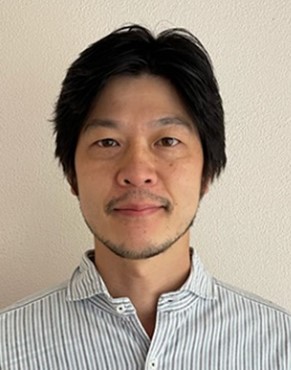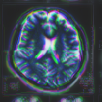Sector for Neuromodulation of Pathological Circuit
Research
Progressive cognitive decline associated with the formation of intraneuronal inclusions composed of aggregated proteins in neurons and glial cells is a common pathological hallmark of neurodegenerative disorders represented as Alzheimer’s disease. Although the overall mechanism underlying the disease progress is not fully understood, cumulative evidence indicates that the toxicity of aggregated proteins can trigger neuroinflammation, circuit dysfunction, and neuronal loss. So far, we have established multimodal neuroimaging methods that enable us to visualize the pathophysiological states of a mouse model for Alzheimer’s disease that could reproduce disease states of the human brain. In our research sector, utilizing these neuroimaging-based approaches, we aim to develop novel neuromodulation technologies to control the dysfunction of pathological circuits for realizing disease therapies in the future.
Sector head
Masafumi Shimojo, PhD
https://researchmap.jp/Masafumi_Shimojo?lang=en
- 2007 Ph.D. in Neuroscience, Tokyo Institute of Technology
Research Scientist, RIKEN Brain Science Institute - 2008 Research Associate, Department. of Neuroscience
The Scripps Research Institute, U.S. - 2014 Researcher, Molecular Imaging Center
National Institute of Radiological Sciences - 2016 Researcher, Department of Functional Brain imaging
National Institutes for Quantum and Radiological Science and Technology - 2021 Senior Researcher, Department of Functional Brain imaging
National Institutes for Quantum Science and Technology - 2022 Principal Researcher, Department of Functional Brain imaging
National Institutes for Quantum Science and Technology
Sector Members
- Yumi Matsushita, Ph.D.
- Rin Yanai, Ph.D.
- Yao Zhiwei
- Yukiko Nomura
Selected Publications
- Matsushita Y, Yoshida K, Yoshiya M, Shimizu T, Tsukamoto S, Takeuchi Y*, Higuchi M, Shimojo M*. TRPC6 is a mechanosensitive channel essential for ultrasound neuromodulation in mammalian brain. bioRxiv. 2024 Mar 11; doi: https://doi.org/10.1101/2024.03.06.583779
- Shimojo M*, Ono M, Takuwa H, Mimura K, Nagai Y, Fujinaga M, Kikuchi T, Okada M, Seki C, Tokunaga M, Maeda J, Takado Y, Takahashi M, Minamihisamatsu T, Zhang MR, Tomita Y, Suzuki N, Maximov A, Suhara T, Minamimoto T, Sahara N, Higuchi M*. A genetically targeted reporter for PET imaging of deep neuronal circuits in mammalian brains. EMBO J. 2021 Nov 15;40(22):e107757.
- Shimojo M, Takuwa H, Takado Y, Tokunaga M, Tsukamoto S, Minatohara K, Ono M, Seki C, Maeda J, Urushihata T, Minamihisamatsu T, Aoki I, Kawamura K, Zhang MR, Suhara T, Sahara N, Higuchi M*. Selective Disruption of Inhibitory Synapses Leading to Neuronal Hyperexcitability at an Early Stage of Tau Pathogenesis in a Mouse Model. J Neurosci. 2020 Apr 22;40(17):3491-3501.
- Shimojo M, Madara J, Pankow S, Liu X, Yates J 3rd, Südhof TC, Maximov A*. Synaptotagmin-11 mediates a vesicle trafficking pathway that is essential for development and synaptic plasticity. Genes Dev. 2019 Mar 1;33(5-6):365-376.
- Shimojo M, Courchet J, Pieraut S, Torabi-Rander N, Sando R 3rd, Polleux F, Maximov A*. SNAREs Controlling Vesicular Release of BDNF and Development of Callosal Axons. Cell Rep. 2015 May 19;11(7):1054-66.
*Corresponding Author




